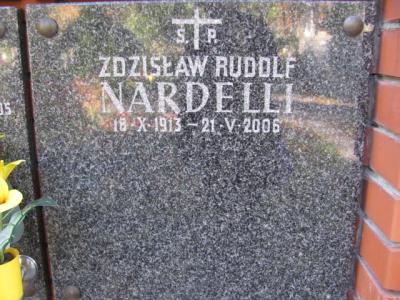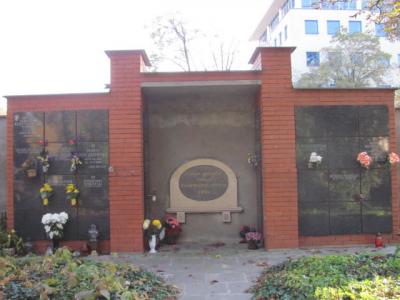Zdzisław Nardelli
Mediathek Sorted

After the battle of Tomaszów Lubelski had been lost, Nardelli was captured in Bortniki near Żydaczów in the county of Lemberg on 18. September 1939 in the eastern area now known as West Ukraine. He made an unsuccessful attempt to escape with a cadet named Z. Nycz near Szepietówka in Podolia. Following an exchange of prisoners between the Nazi and the Soviet forces he was put on a transport to the west. On the 22. September he made another attempt to escape from a railway wagon near Görlitz, but this too was unsuccessful. He finally arrived with his comrades at the transit camp at Konin Żagański in the 8. Wehrmacht District of Lower Silesia. Following his registration in Stalag VIII C in Sagan, where he was to stay for some time, he was given the detainee number 4985. Here he spend his first winter in the war and slowly adapted to conditions in a prisoner-of-war camp. He began to work in the areas of education and art, and encouraged his comrades to do likewise. One result was a satirical nativity play presented there to mark the New Year in 1940 and entitled Uwaga! Sagan wrze! [Beware! Things are simmering in Sagan!]. The complete extant nativity play is one of the most valuable documentary relics left by Polish prisoners in the camps. The frequently biting couplets were written by Nardelli along with the painter, Tadeusz Łakomski, who was known for his loquacity and refreshing humour. Łakomski also worked on the set and the puppets with the painter, Jan Świderski. On the 20. May 1940 Nardelli and other Polish POWs were transferred to Stalag VIII A in Görlitz. One month before the capitulation of France the Germans began to set up special camps to accommodate the forthcoming wave of POWs from the west.
In June 1940 Stalag VIII A in Görlitz was completed by the first Polish prisoners to be captured on the battlefields: these included Czesław Mętrak from Warsaw. Just like the Polish POWs in Sagan, they were taken to a transit camp – in Görlitz – where they survived the winter 1939/40 in tents. The Poles greeted the first transports of French POWs as if they were hosts, with friendship and great interest because they were keen to learn the latest news from the West of what was happening in the world outside. They made every effort to reassure the new arrivals who had lived through the trauma of defeat and imprisonment. The Polish prisoners had already managed to get their own “Polish library” (“Polish” because until then only Poles were interned in the camp, although most of the stocks were in German) and set up a Roman Catholic chapel. On top of this they were constantly applying to set up a community room, a request that was continually rejected by the Germans on the grounds that Poland no longer existed as a state and for that reason Polish prisoners had no rights whatsoever.

















































































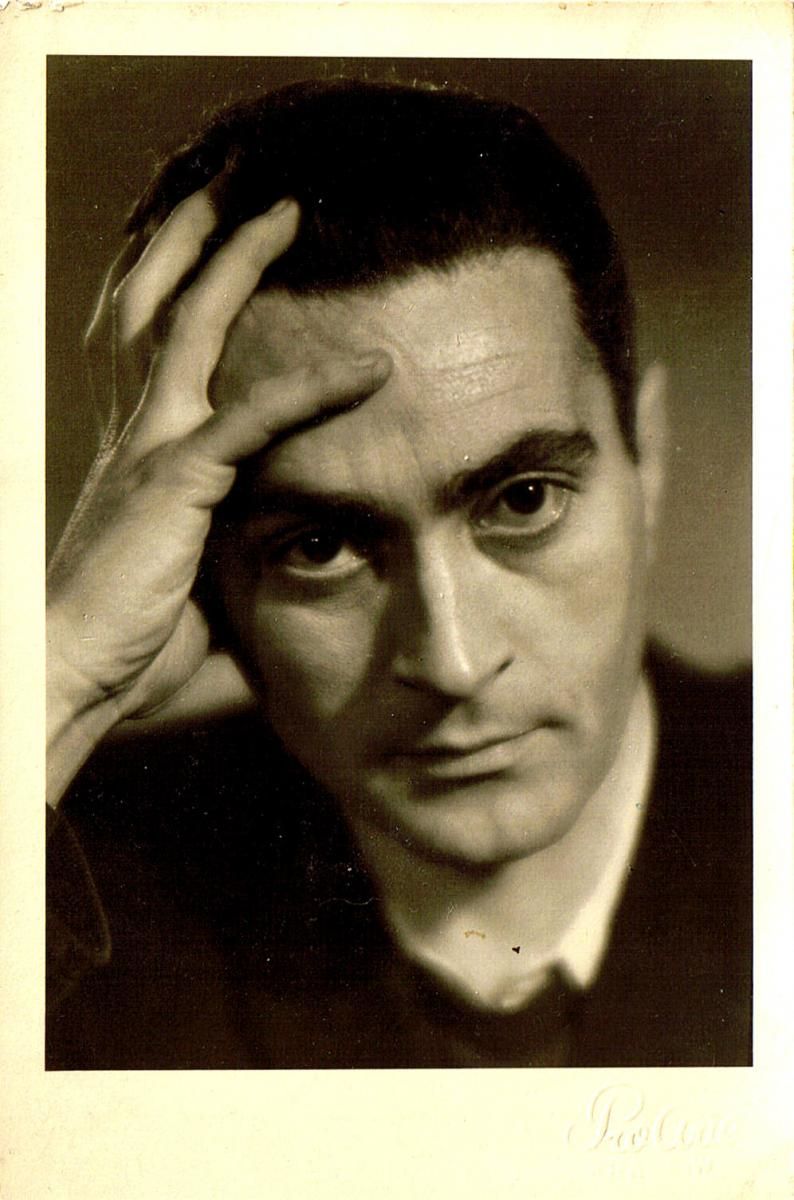
![His debut as poet, Warsaw 1938 His debut as poet, Warsaw 1938 - „Świt na nowo” [Daybreak Anew], tomik poezji [volume of poetry], editor, F. Hoesick. Warsaw 1938, and poem entitled “Wyjazd” [Departure].](/sites/default/files/styles/width_100_tiles/public/assets/images/1._nardelli_swit_okladka_0.jpg?itok=XtuveBzH)
![Stalag VIII C in Sagan Stalag VIII C in Sagan - A reprint from the file in the Muzeum Obozów Jenieckich [POW Camp Museum].](/sites/default/files/styles/width_100_tiles/public/assets/images/2._zagan_folder.jpg?itok=rMCH1RCU)
![„Szopka Sagańska” [Sagan Nativity Play] „Szopka Sagańska” [Sagan Nativity Play] - „Uwaga! Sagan wrze…” [Beware! Things are simmering in Sagan...] (Title page), A Nativity Play for the New Year, presented by Polish prisoners in Sagan (1939) and Görlitz (1940).](/sites/default/files/styles/width_100_tiles/public/assets/images/3._szopka_saganska.jpg?itok=3zhM3IZy)
![„Szopka Sagańska” „Szopka Sagańska” - “Oczko we mgle…” [A Tiny Eye in the Fog], page with the censor’s triangular seal and the word “checked”, in Stalag VIII C in Sagan.](/sites/default/files/styles/width_100_tiles/public/assets/images/4._szopka_saganska.jpg?itok=EzGpZ0FL)
![Zdzisław Nardelli, Caricature, 1939 Zdzisław Nardelli, Caricature, 1939 - A caricature of Zdzisław Nardellis in: “Szopka Sagańskiej” [Sagan Nativity Play], completed in Stalag VIII C in Sagan, winter 1939.](/sites/default/files/styles/width_100_tiles/public/assets/images/5._nardelli_karykatura.jpg?itok=koe6bqgv)

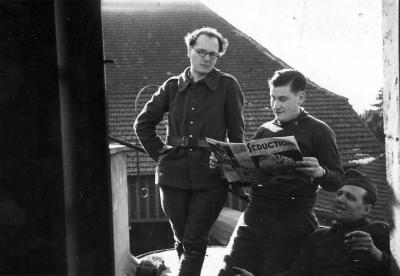
![“Wieczór polski” [Polish Evening] in Görlitz, mid-December 1940 “Wieczór polski” [Polish Evening] in Görlitz, mid-December 1940 - Cover of the programme of the Polish Evening, put together by Bohdan Samulski, Stalag VIII A in Görlitz, mid-December 1940.](/sites/default/files/styles/width_100_tiles/public/assets/images/8._wieczor_polski_1940_program_s._1-4_600dpj.jpg?itok=ZrxNTYFw)
![“Wieczór polski” [Polish Evening] in Görlitz, mid-December 1940 “Wieczór polski” [Polish Evening] in Görlitz, mid-December 1940 - Cover of the programme of the Polish Evening, put together by Bohdan Samulski, Stalag VIII A in Görlitz, with the seal of the camp censor, “checked”, mid-December 1940.](/sites/default/files/styles/width_100_tiles/public/assets/images/9._wieczor_polski_1940_program_s._2-3_600dpj.jpg?itok=gGw67Eiq)
![Ensign Czesław Mętrak, a portrait by Bohdan Samulski, December 1940 Ensign Czesław Mętrak, a portrait by Bohdan Samulski, December 1940 - Ensign Czesław Mętrak, co-promoter of “Wieczór polski” [Polish Evening]. After fleeing from prison he succeeded in returning to Poland and served as a second lieutenant “Duch” in the Home Army.](/sites/default/files/styles/width_100_tiles/public/assets/images/10.-cz.jpg?itok=sGDzxbSv)
![Ensign Bohdan Samulski, 1941 Ensign Bohdan Samulski, 1941 - Co-promoter of “Wieczór polski” [Polish Evening]. After fleeing from prison he became an officer in the 1. Tank Division of General Stanisław Maczek, and was awarded the order Virtuti Militari.](/sites/default/files/styles/width_100_tiles/public/assets/images/11._b._samulski_0.jpg?itok=9_FJWMBr)
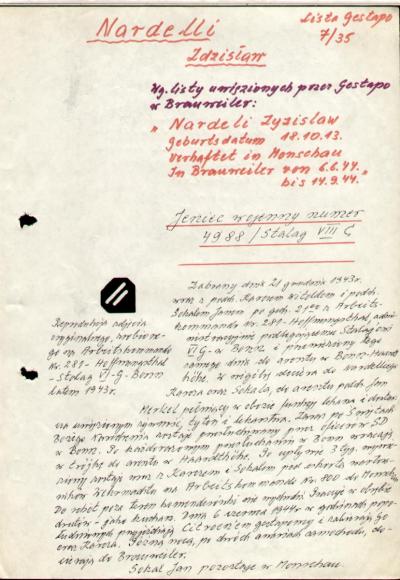
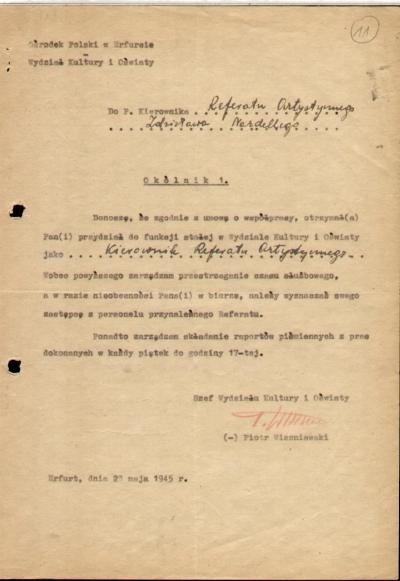
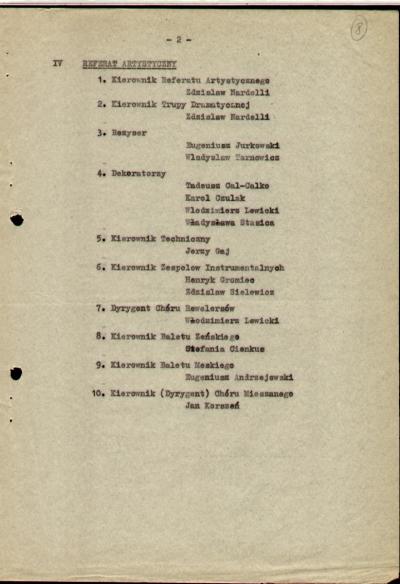
![The sole existing film roll The sole existing film roll - Zdzisław Nardelli in the film by Antoni Bohdziewicz “Za wami pójdą inni…” [Others will be following you], 1949.](/sites/default/files/styles/width_100_tiles/public/assets/images/15._z._nardelli_w_filmie.jpg?itok=HiQspfto)
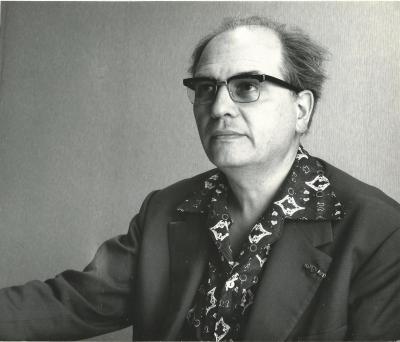
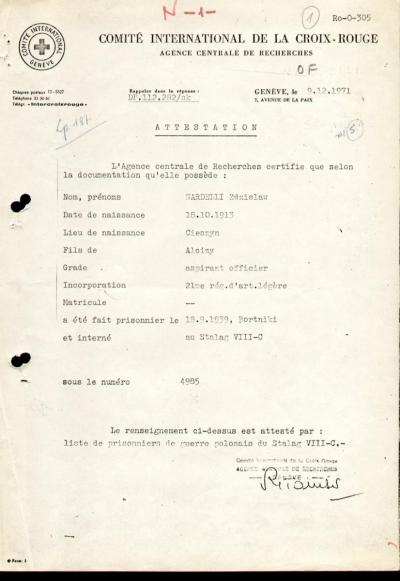
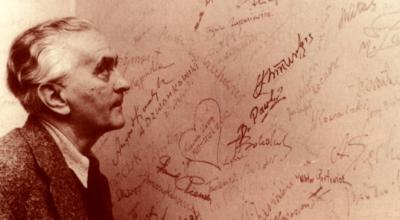
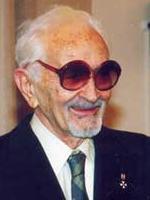
![Zdzisław Nardelli “Pasztet z ojczyzny” [A Pie from the Homeland] Zdzisław Nardelli “Pasztet z ojczyzny” [A Pie from the Homeland] - Zdzisław Nardelli “Pasztet z ojczyzny” [A Pie from the Homeland], Wyd. “Śląsk”, Katowice 1986, okładka.](/sites/default/files/styles/width_100_tiles/public/assets/images/20._nardelli_pasztet_okladka.jpg?itok=awWM9OsG)
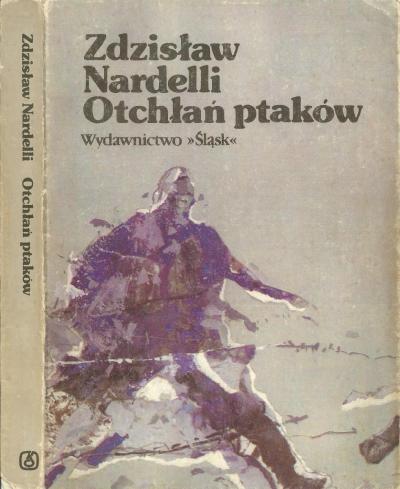
![Dedication written Zdzisław Nardelli Dedication written Zdzisław Nardelli - A dedication written by Zdzisław Nardelli for Jerzy Stankiewicz in a copy of “Otchłań ptaków” The Birds’ Hell], Warsaw, 27. March 2002.](/sites/default/files/styles/width_100_tiles/public/assets/images/22._nardelli_1989_dedykacja.jpg?itok=LszHQZ-E)
![“Płaskorzeźby dyletanta” [The Bas-Relief of a Dilettante] “Płaskorzeźby dyletanta” [The Bas-Relief of a Dilettante] - Zdzisław Nardelli “Płaskorzeźby dyletanta” [The Bas-Relief of a Dilettante], Wyd. Radia i Telewizji [Radio and TV publisher], Warsaw 1988, cover by Zdzisław Nardelli.](/sites/default/files/styles/width_100_tiles/public/assets/images/23._nardelli_plaskorzezby_okladka.jpg?itok=O3spRHrT)
